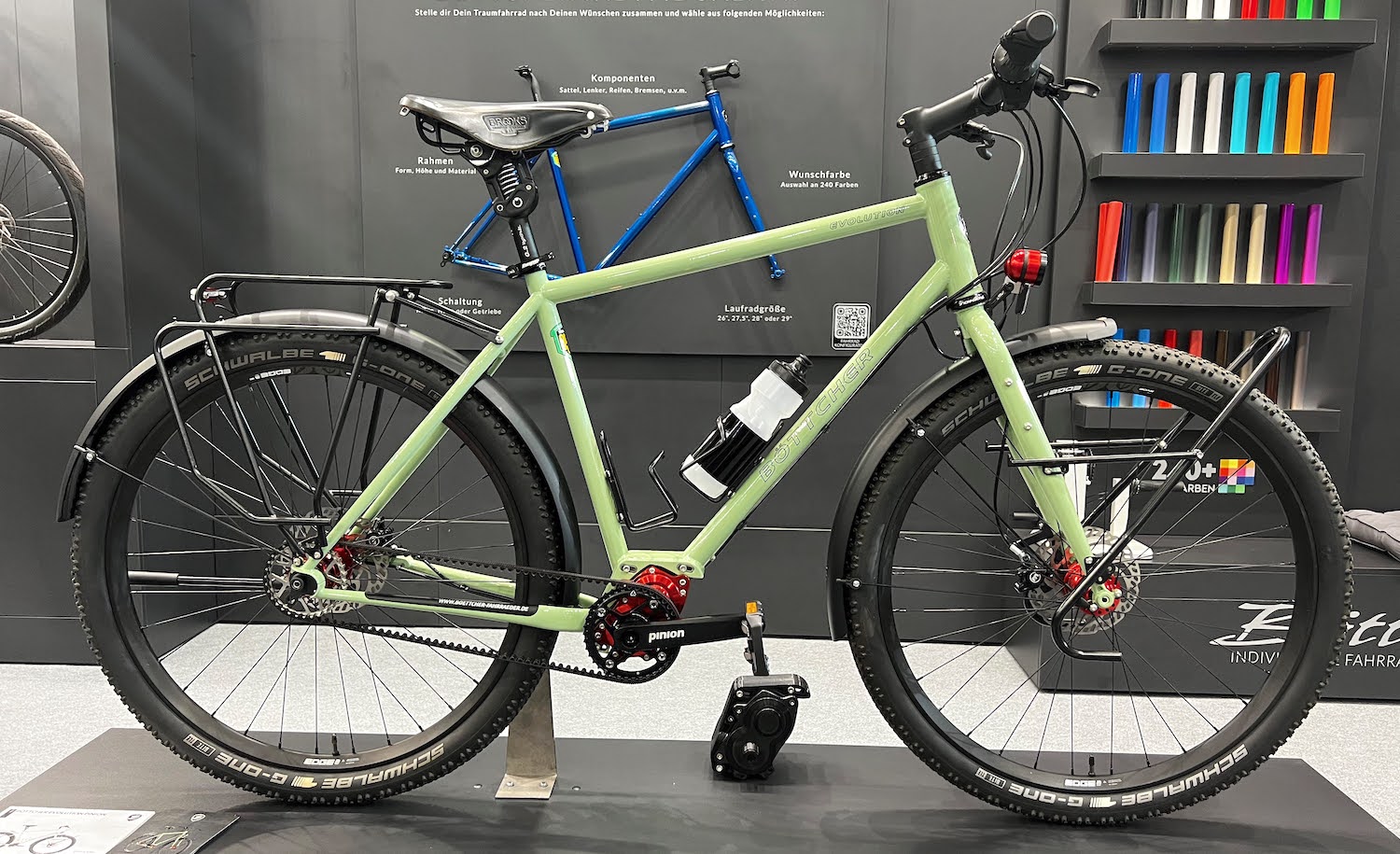Table of Contents
Every year I update the Bikepacking Bike Buyer’s Guide, which provides me with a huge amount of data around bike geometry, parts, tyre clearance, pricing, bike weights and more. Today we’ll be taking a look at some of the key statistics from the 2020 update.
I’ve split bikepacking bikes into six distinct categories in my buyer’s guide, and that’s how I’ll present them here too. Everything is broken down using percentages to show the popularity of each of the bike features and components. I’ve also included average bike weights and climbing gear ratios.
Today we’ll be comparing:
Frame Material – The construction material used for the bike frame.
Drivetrain Type – 1X (no front derailleur), 2X (front derailleur and two chainrings) or other (3X, Rohloff hub, Pinion gearbox).
Max Tyre Width – The maximum tyre width that the frame and fork can accommodate.
Weight – The bike weights averaged out from the bike category.
Climbing Gear – The lowest climbing gears, in gear inches, averaged out for each category.
Colour – The most popular colour in each category.
700C Gravel & All-Road Bikes
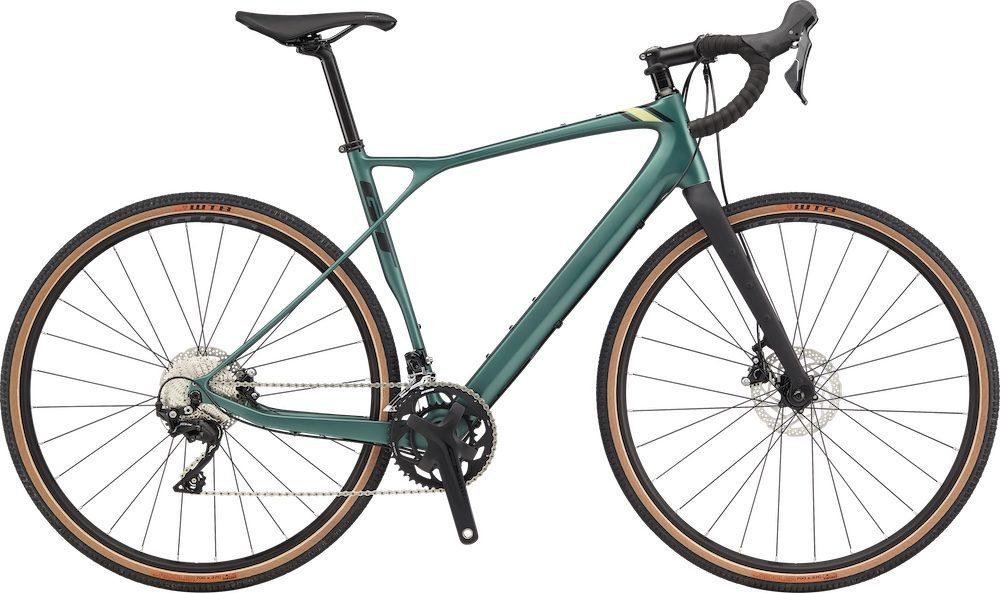
Gravel and all-road bikes are built to be fast on both sealed and dirt roads. The majority of bikes in this category are constructed out of carbon to keep the weight down, in fact, the lightest gravel bike in my book is just 8.5kg (18.7lb) and more than 50% tip the scales at under 10kg (22lb).
Frame Material
1. Carbon (40%)
2. Aluminium (27%)
3. Steel (25%)
4. Titanium (8%)
Given the need for higher gear ratios on sealed surfaces, it’s not surprising to see that 2X drivetrains are preferred over 1X. While the reduced gear range and bigger jumps between gears are fine for mountainous terrain, 2X is still the preference for smoother, rolling terrain.
Drivetrain
1. 2X (58%)
2. 1X (42%)
3. Other (2%)
Most gravel bikepacking bikes have a tyre clearance of between 42 and 45mm, but there are still many options that can squeeze in a 50mm tyre too.
Maximum Tyre Width
1. 41-45mm (62%)
2. 46-52mm (25%)
3. 35 to 40mm (13%)
The average weight across this category is 11.2kg, and the lowest climbing gear works out to be 29 gear inches. In my experience, this is a little over-geared for a loaded bikepacking bike, but you can easily choose the bikes with a more appropriate 23 gear inch low gear if you’re looking to be the best climber you can. As more manufacturers spec sub-compact cranksets and wider range cassettes to their gravel bikes, we can expect the climbing gear to lower over time.
Averages
Weight (11.2kg)
Climbing Gear (29 gear inches)
Interestingly, a third of all gravel bikes are given a grey colourway!
Most Popular Colour
Grey (33%)
27.5″ Gravel & All-Road Bikes
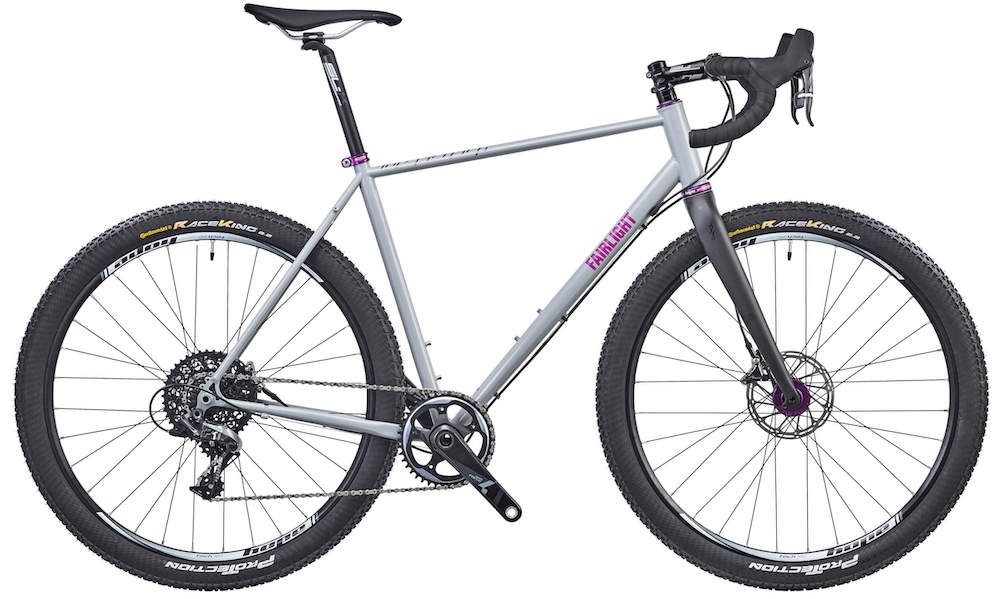
While steel frames only made up a quarter of the 700C gravel bikes, they make up over a third for the rougher-road-oriented 27.5″ bikes. Carbon is almost as popular (with another third of the share), and aluminium + titanium make up that final third.
Frame Material
1. Steel (35%)
2. Carbon (32%)
3. Aluminium (26%)
4. Titanium (7%)
Given the intended use of many 27.5″ gravel bikes, it’s not surprising to see that 1X drivetrains are more popular here. 1X drivetrains also help provide extra tyre clearance at the chainstay for knobby mountain bike tyres (2.1″ or wider) like those pictured on the Fairlight Secan above.
Drivetrain
1. 1X (66%)
2. 2X (30%)
3. Other (4%)
Maximum Tyre Width
1. 2.1″ or wider (68%)
2. 2.0″ or narrower (32%)
The average bike weight between the 700C and 27.5″ models is almost identical (11.2kg vs 11.1kg). The climbing gear drops a touch too, thanks to the wide range cassettes (often 11-42t) on the 1X drivetrains.
Averages
Weight (11.1kg)
Climbing Gear (27 gear inches)
Grey is the most popular colour for both 700C and 27.5″ gravel bikes, so it can be assumed that the majority of people who buy gravel bikes are accountants. 😬
Most Popular Colour
Grey (26%)
29″ Off-Road Bikepacking Bikes
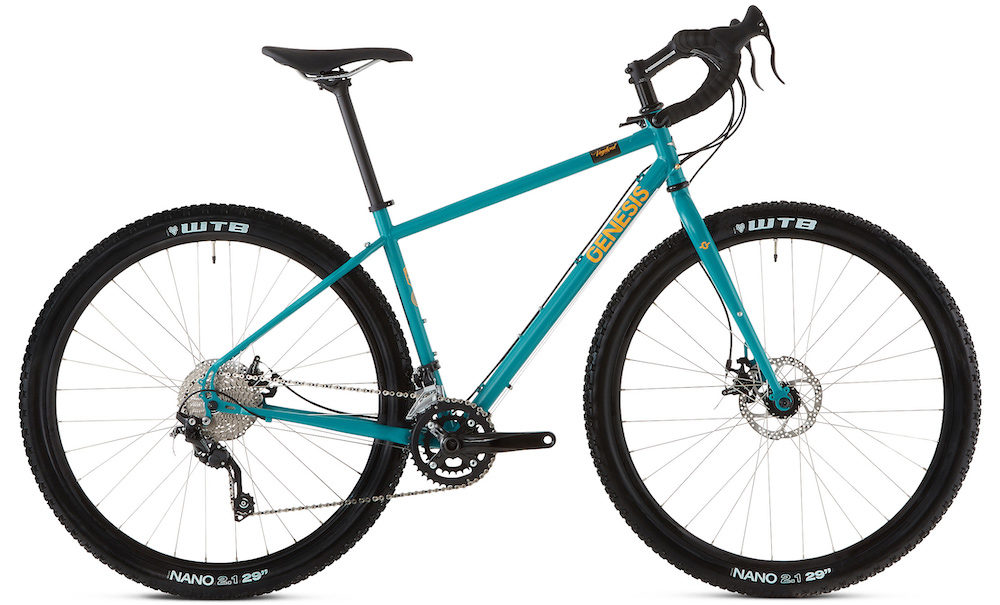
Switching to the 29er off-road bikepacking bikes results in more steel and less carbon frames. Steel is often preferred in the backcountry as it provides great defect tolerance – if it’s going to fail, it bends and dents rather than shattering or snapping. It’ll also handle more directions of force, for example, a side impact or stick in the wheel.
Frame Material
1. Steel (54%)
2. Aluminium (23%)
3. Carbon (14%)
4. Titanium (9%)
Strangely, there are quite a few 2X drivetrains found on 29″ off-road bikepacking bikes! This is actually quite nice to see, as the 2X bikes almost all have lower climbing gears than the 1X options in this category.
Drivetrain
1. 2X (45%)
2. 1X (36%)
3. Other (19%)
You can use a 2.1 to 2.3″ tyre with most 29er bikes and many more are fitting even wider tyres too thanks to wider cranksets/BBs and ‘boost’ rear axle spacing.
Maximum Tyre Width
1. 2.1 to 2.3″ (68%)
2. 2.4″ or wider (32%)
The average 29er bike is a bit heavier than a 27.5″ gravel bike, but not by much (11.8kg vs 11.1kg). In addition, you get lower gear ratios for off-road use, and if you shop around, you’ll find many bikes with 20-23″ climbing gears too.
Averages
Weight (11.8kg)
Climbing Gear (24 gear inches)
The most popular colour for a 29″ off-road bikepacking bike is blue.
Most Popular Colour
Blue (18%)
Bikepacking Plus Bikes
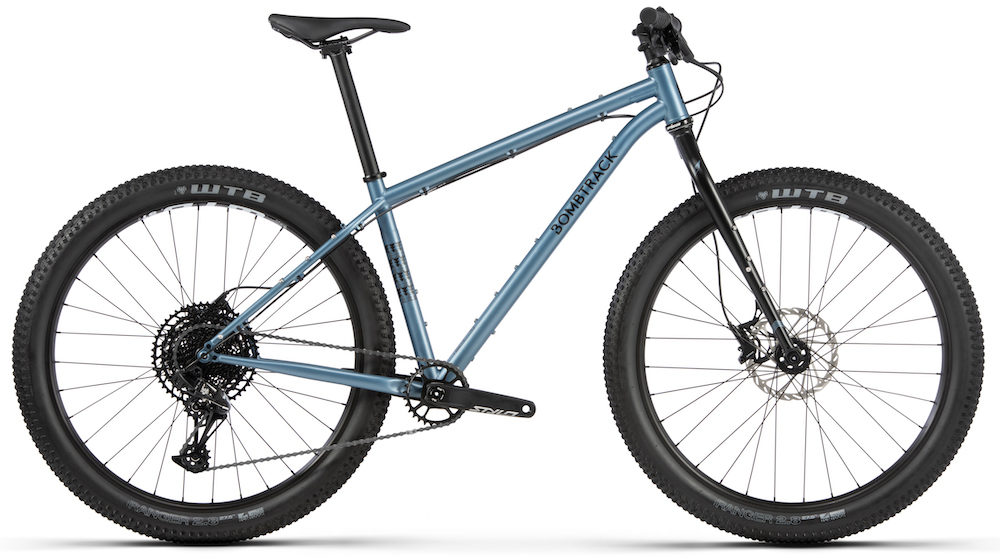
In the plus bike category – bikes which are tailored around off-road backcountry riding – the frames are overwhelmingly steel. And there’s not a single carbon bike in sight!
Frame Material
1. Steel (81%)
2. Aluminium (12%)
7. Titanium (7%)
Drivetrains for plus bikes are overwhelmingly 1X. This is mostly because a front derailleur almost always constrains the rear tyre clearance, especially if the bike manufacturer is looking to use short chainstays.
Drivetrain
1. 1X (70%)
2. 2X (19%)
3. Other (11%)
27.5+ bikes are twice as popular as 29+ bikes! One of the main reasons for this is that you can fit a regular 29×2.2″ wheelset into a 27.5+ bike to make it faster and lighter when you need. This is good for manufacturers because they can have one frame with two different build options, but it also means you can have one bike and two different wheelsets to optimise for all kinds of different terrain.
Maximum Tyre Width
1. 27.5+ (59%)
2. 29+ (30%)
3. 29×2.6″ (11%)
Plus bikes, with their steel framesets, tip the scales at 13.9kg on average. The climbing gears are almost all under 20 gear inches which is almost ideal for off-road backcountry stuff.
Averages
Weight (13.9kg)
Climbing Gear (19.5 gear inches)
The most popular colour is again blue!
Most Popular Colour
Blue (22%)
Full-Suspension Bikepacking Bikes
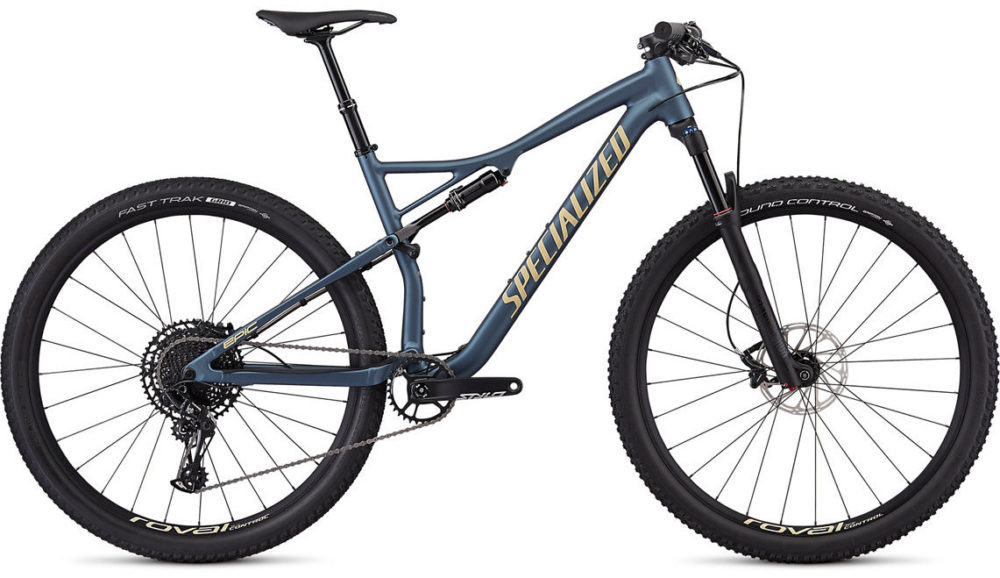
Full suspension mountain bikes are either aluminium or carbon. Usually, it’s aluminium under US $3000 and carbon over $3000 but there are exceptions. These two frame materials are best for full suspension frame construction as they’re much more customisable (frame shapes, forming, butting profiles etc) than steel or titanium – in addition to being lighter.
Frame Material
1. Aluminium (50%)
1. Carbon (50%)
1X drivetrains make up 100% of mountain bike builds. A full suspension bike sees almost all of its time on trails, so this keeps things simple and allows for better frame design thanks to not needing space for a front derailleur mount.
Drivetrain
1. 1X (100%)
Most full suspension bikes that I’ve chosen for my book are designed around xc tyres, but as the 29×2.6″ tyre size becomes more popular, almost half of all bikes in this list will happily accept something fatter.
Maximum Tyre Width
1. 29×2.2″ to 2.4″ (55%)
2. 29×2.5″ or wider (45%)
Interestingly, a full suspension bike is on-average lighter than a rigid plus bike. While price certainly has something to do with this, it just goes to show how heavy most steel frames are. As you’d expect, the climbing gears on mountain bikes are universally suited to off-road terrain.
Averages
Weight (13.4kg)
Climbing Gear (18.6 gear inches)
Blue strikes again! Over one-third of full suspension bikes come in a blue tone. Must be the colour of 2020!
Most Popular Colour
Blue (35%)
Fat Bikes
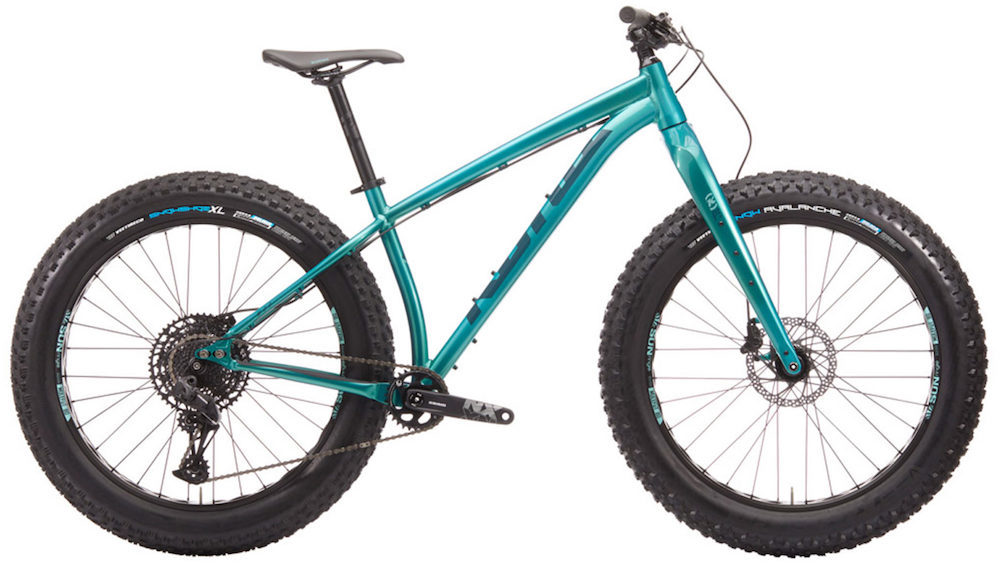
And finally, we have fat bikes! It might surprise you that the sheer majority are either aluminium or carbon, but this makes sense. Fat bike rims and tyres are really heavy, so if you can shave a few kilograms from the frame and fork the bike is going to ride much nicer. Not to mention that the tyres absorb so much shock that nobody could possibly tell if a steel or aluminium frame was underneath them…
Frame Material
1. Aluminium (47%)
2. Carbon (26%)
3. Steel (16%)
4. Titanium (11%)
All but one bike was using a 1X drivetrain to maximise the tyre clearance.
Drivetrain
1. 1X (95%)
2. 2X (5%)
26″ fat bike wheels are still the most popular size (and the only ones available in a 5.0″ width), although the 27.5×3.8″
mid-fat bike options are certainly growing.
Rim Diameter
1. 26″ wheels (68%)
2. 27.5″ wheels (32%)
Again, fat bikes are on average lighter than a plus bike because they employ much lighter frameset materials. The climbing gears are appropriate for fat bike use – you may even want to go lower.
Averages
Weight (13.7kg / 30.2lb)
Climbing Gear (18.4 gear inches)
Blue is again the most popular colour for fat bikes!
Most Popular Colour
Blue (25%)
If You’re Keen To Learn Everything About Bikepacking Bikes, Find My Buyer’s Guide HERE


